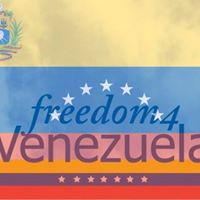 Opposition leader Juan Guaidó returned to Venezuela Monday after a 10-day absence to attempt to reignite a U.S.-backed campaign to push out authoritarian President Nicolás Maduro.
Opposition leader Juan Guaidó returned to Venezuela Monday after a 10-day absence to attempt to reignite a U.S.-backed campaign to push out authoritarian President Nicolás Maduro.
“In Venezuela, we have tried everything. We have protested, we have continued to push in every direction for a peaceful transition,” Guaidó tells the Washington Post. “Right now, I see three scenarios,” he adds:
- First, that an election is allowed to take place in a free and transparent manner. That’s what we’re working for as soon as possible.
- Second is some sort of sui generis transition with Chavismo [parts of the regime]. That’s something that’s difficult to imagine at this point….. I’m referring to something like what happened on January 23 of 1958 — the date when parts of the military removed the dictator [Marcos Pérez Jiménez].
- Lastly, there is an option where the military could get on the side of the constitution and of Guaidó and of the resistance, and it could stop the usurpation. That’s the option that uses force, but it comes from within. RTWT
 The primary tasks of a transitional regime would be economic stabilization, humanitarian assistance, internal security and institutional reform, all of which are likely to require significant external assistance, the International Crisis Group contends:
The primary tasks of a transitional regime would be economic stabilization, humanitarian assistance, internal security and institutional reform, all of which are likely to require significant external assistance, the International Crisis Group contends:
In other words, Venezuela will need a genuine transition period as opposed to the kind of abrupt “regime change” that many in the military, the chavista movement and the government believe the current plan implies. An international monitoring and verification process, involving countries acceptable to both sides, could cement the guarantees and other commitments made in such negotiations.
A solution to the crisis requires greater international engagement, which includes pressure on Cuba, said analyst Moisés Naím [a former National Endowment for Democracy board member]. The Communist regime in Havana has been able to plunder Venezuela for many years without consequences.







